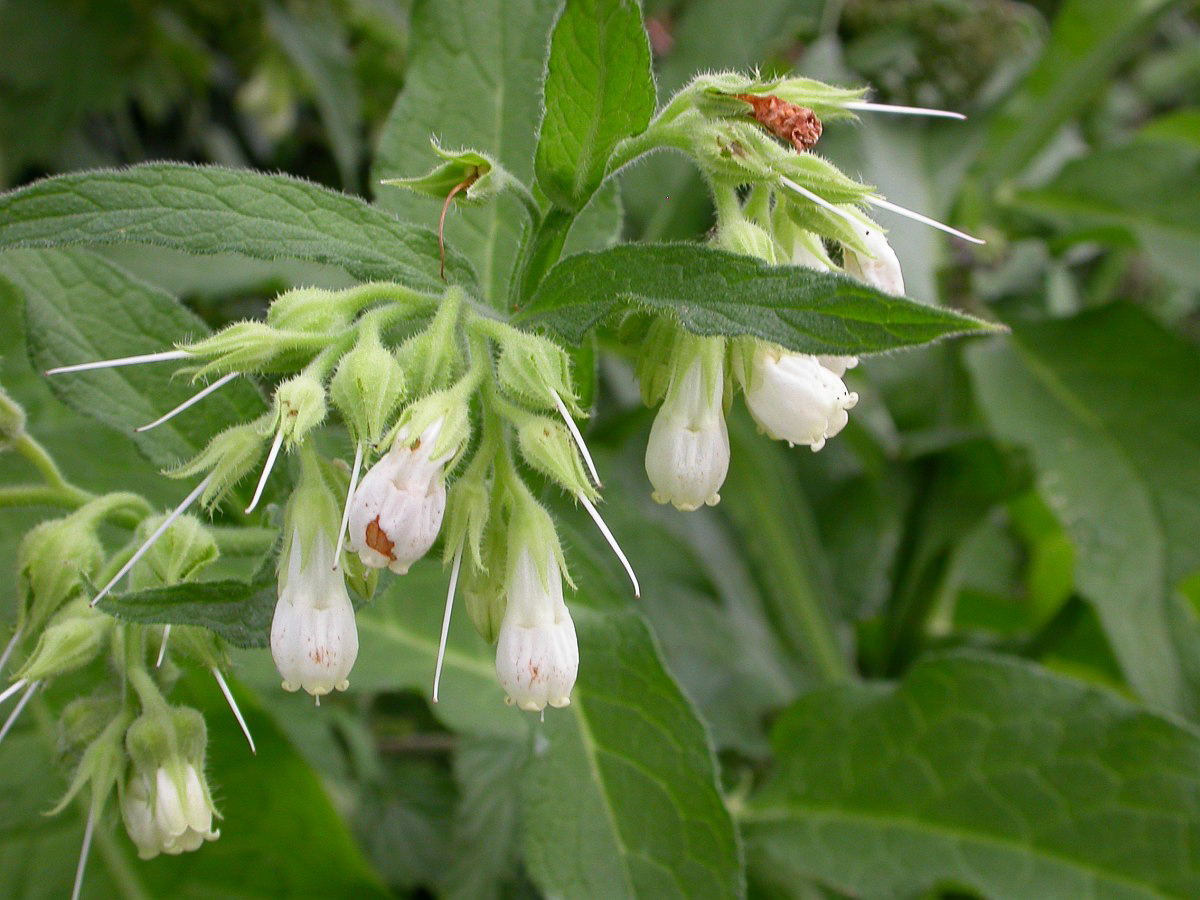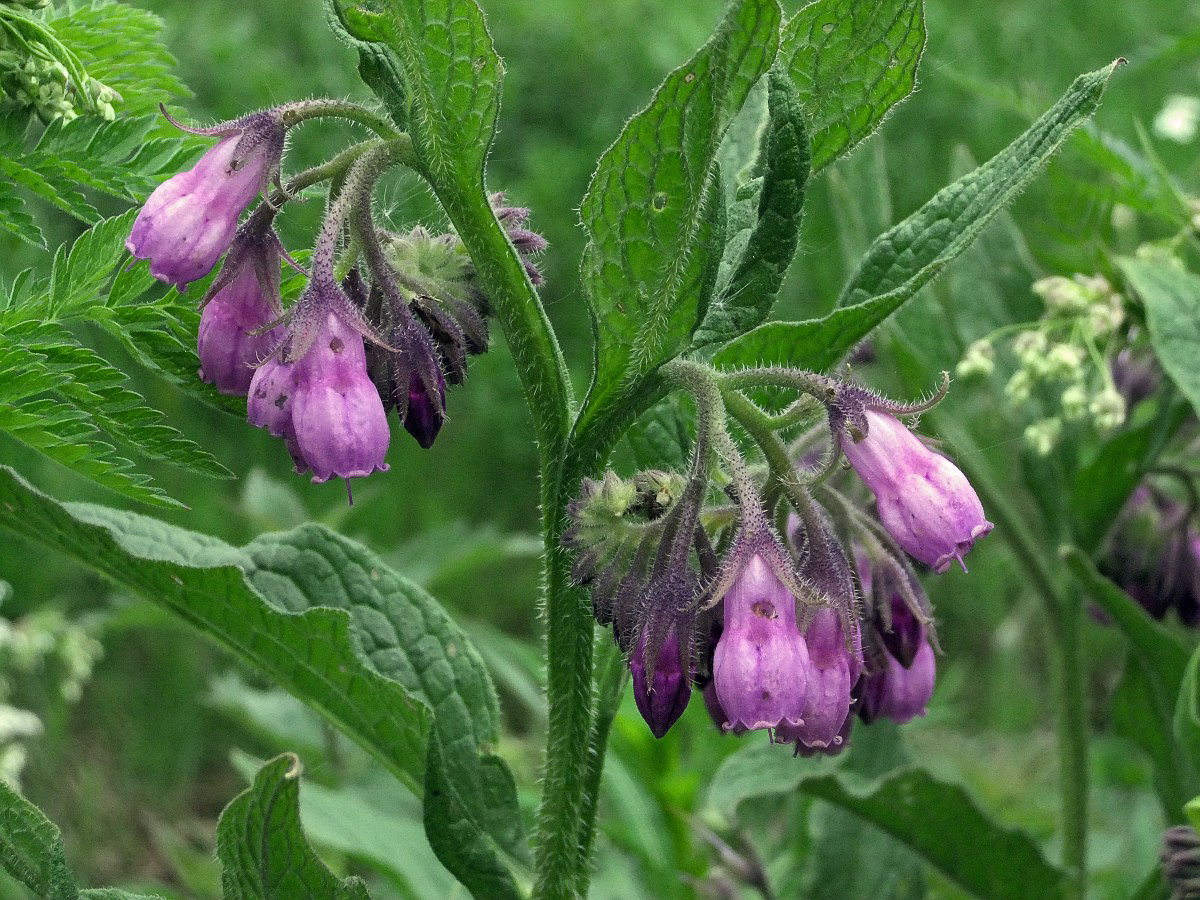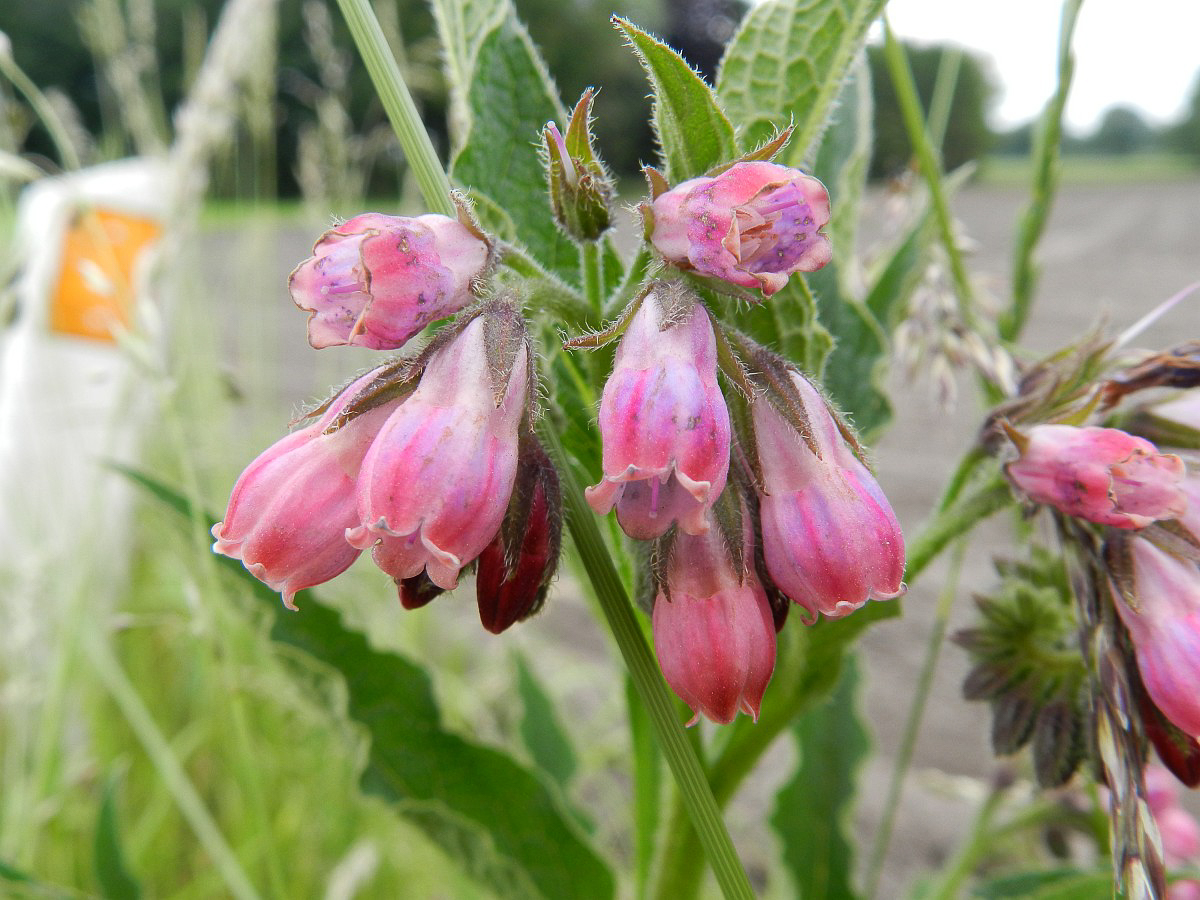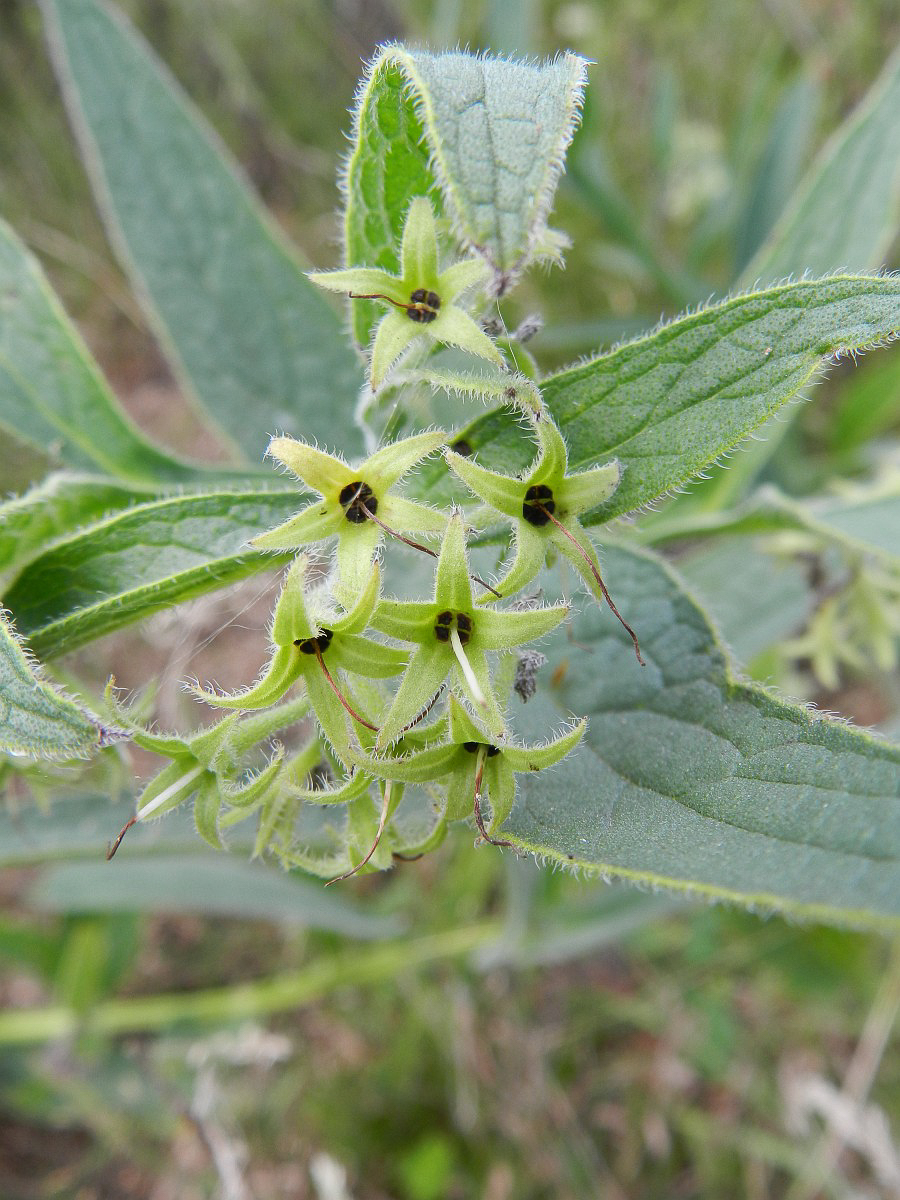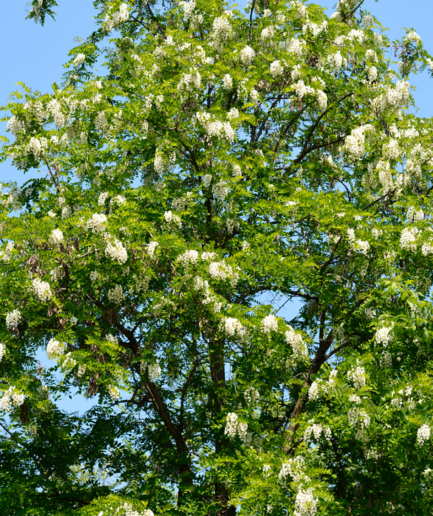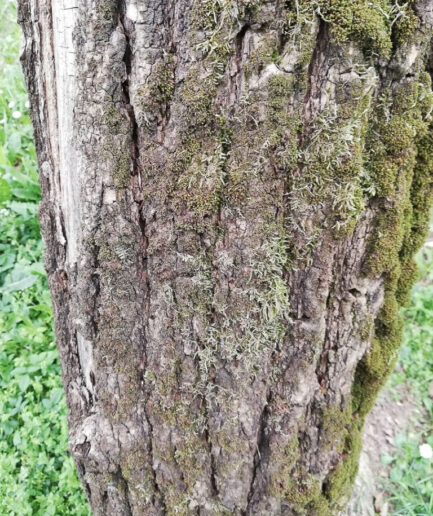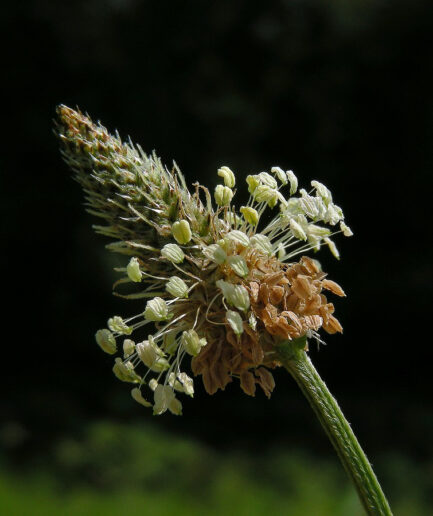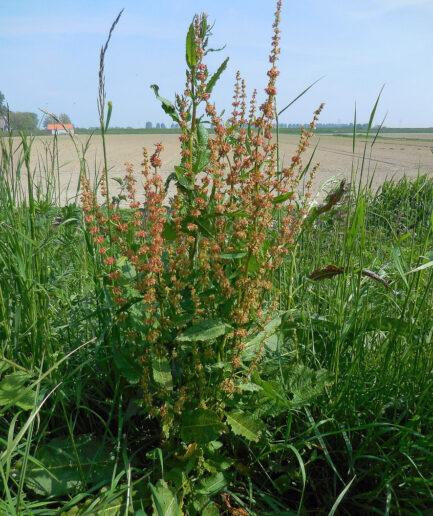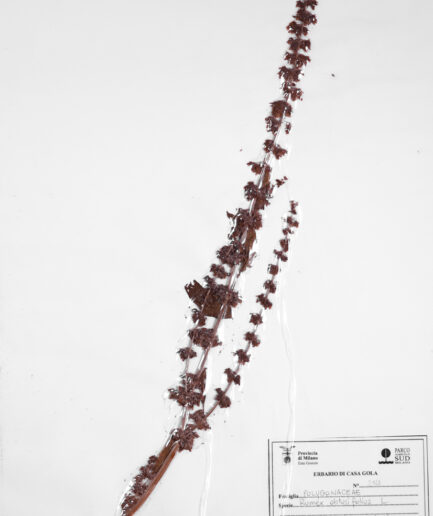Blackwort
Scientific Name: Symphytum officinale L.
Family: Boraginaceae
MORPHOLOGY
Habit and Size: Perennial plant with a large, wrinkled rhizome (black externally, white internally), herbaceous appearance, the entire plant is covered by a slight tomentose layer; height between 30 and 80 cm.
Stem: Hollow, erect, quadrangular stems with reflexed hairs, branched towards the apex, winged along their length by the extension of the basal part of the cauline leaves.
Leaves: Oval or lanceolate leaves, alternate, long-decurrent on the stem, with an acute apex, sturdy, bright green, the lower side silvery due to a tomentose, silky coating, with prominent veins, and crenate margins.
Flowers: The flowers are in dense, scorpioid cymes, carried by long peduncles making them pendulous, in colors ranging from pink, violet, yellowish-white, rarely white tinged with green or ivory; in certain areas, the yellowish-white or white flower form is exclusive. The tubular, funnel-shaped calyx is divided into 5 awl-shaped, acuminate teeth, ciliated along the edge and central vein; the corolla greater than 16 mm, is tubular and slightly bell-shaped. Blooms from April to November.
Fruits and Seeds: The fruits are schizocarps with 4 ovate mericarps, dark, smooth, and shiny.
DISTRIBUTION AND HABITAT
Found in central and northern Italy in humid environments, sometimes disturbed, along watercourses, wet meadows, and riparian woods, from 0 to 1,300 m.
USE
An astringent, emollient, wound healing, decongestant, soothing, analgesic, vulnerary, and expectorant plant. Internal use is highly discouraged and dangerous due to the content of hepatotoxic alkaloids (pyrrolizidine). It is used in gels, solutions, or emulsions for treating dry, chapped, or hyperkeratotic skin. It is also used in preparations for topical treatment of pressure sores, varicose ulcers, hemorrhoids, fissures, and other inflammatory and irritating conditions of nursing mothers’ nipples, as well as in oral cavity conditions as a mouthwash. It was commonly used in the past as a callus remover. Before using any plant-based product (medicinal or non-medicinal) for therapeutic or similar purposes, it is always advisable to consult your doctor first. Traditionally used in cooking, both as tea and as a coffee substitute, the roots and leaves were used as vegetables, but this use is highly discouraged due to the plant’s toxicity. The rhizome is a dye source and provides a brown colorant.
INTERESTING FACTS
Until the late 1980s, herbalists recommended this species as an ideal remedy for herb lovers, completely harmless and safe. However, since it was discovered to contain substances harmful to the liver, serious professionals now recommend it only for external use. The ancient Greeks used the mucilaginous roots of Common Comfrey externally to treat wounds, believing it could stimulate tissue growth. The sticky mass of Comfrey becomes as hard as plaster; on ancient battlefields, cloths dipped in the paste made from rhizomes were often wrapped around broken bones. Once dried, it resulted in a primitive yet effective cast. For over 4,000 years, it has been known as the “miraculous herb” to mend broken bones, and its medicinal properties have always been recognized.
Photo: under free license from Saxifraga and Ed Stikvoort, Peter Meininger, Hans Dekker, Rutger Barendse




